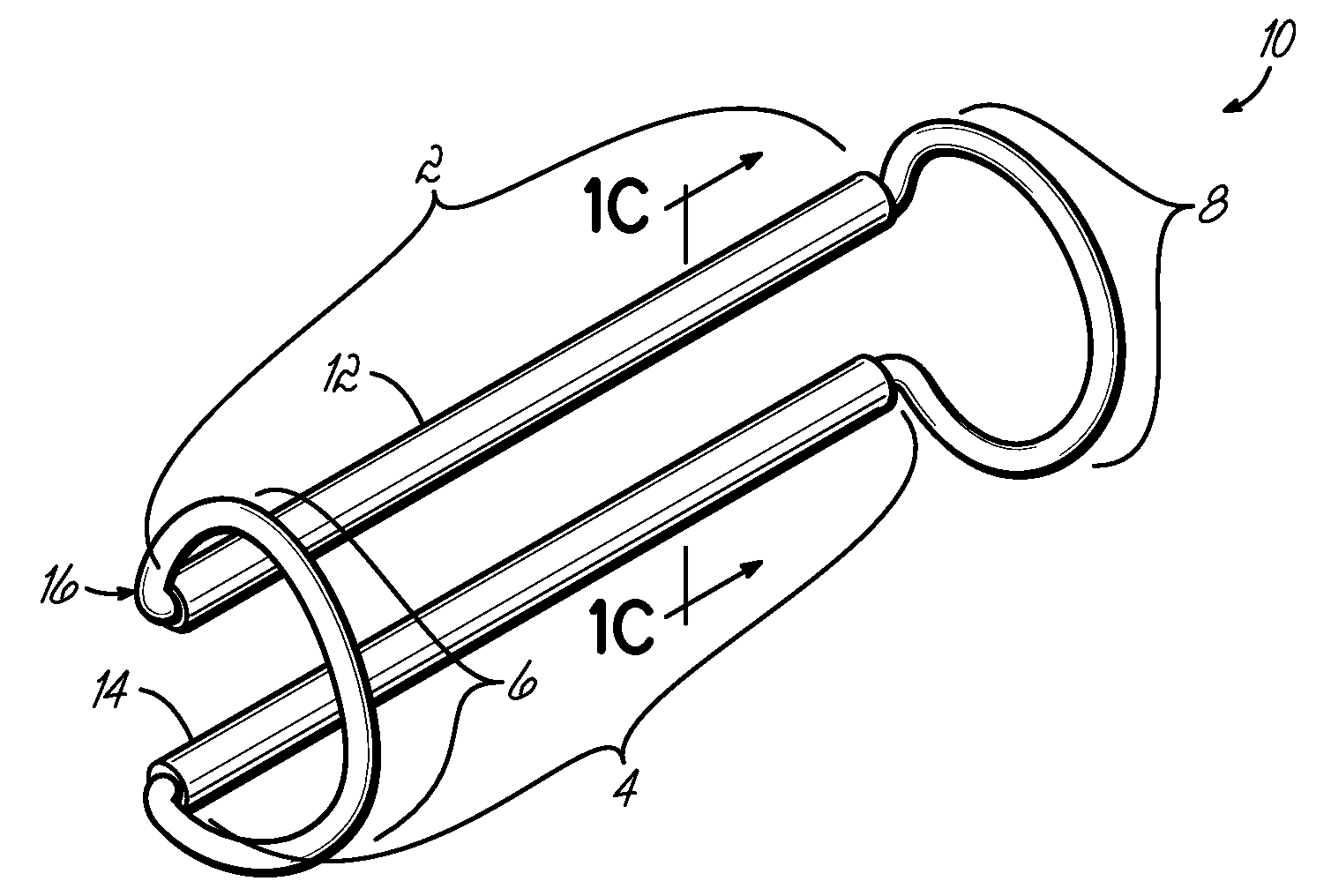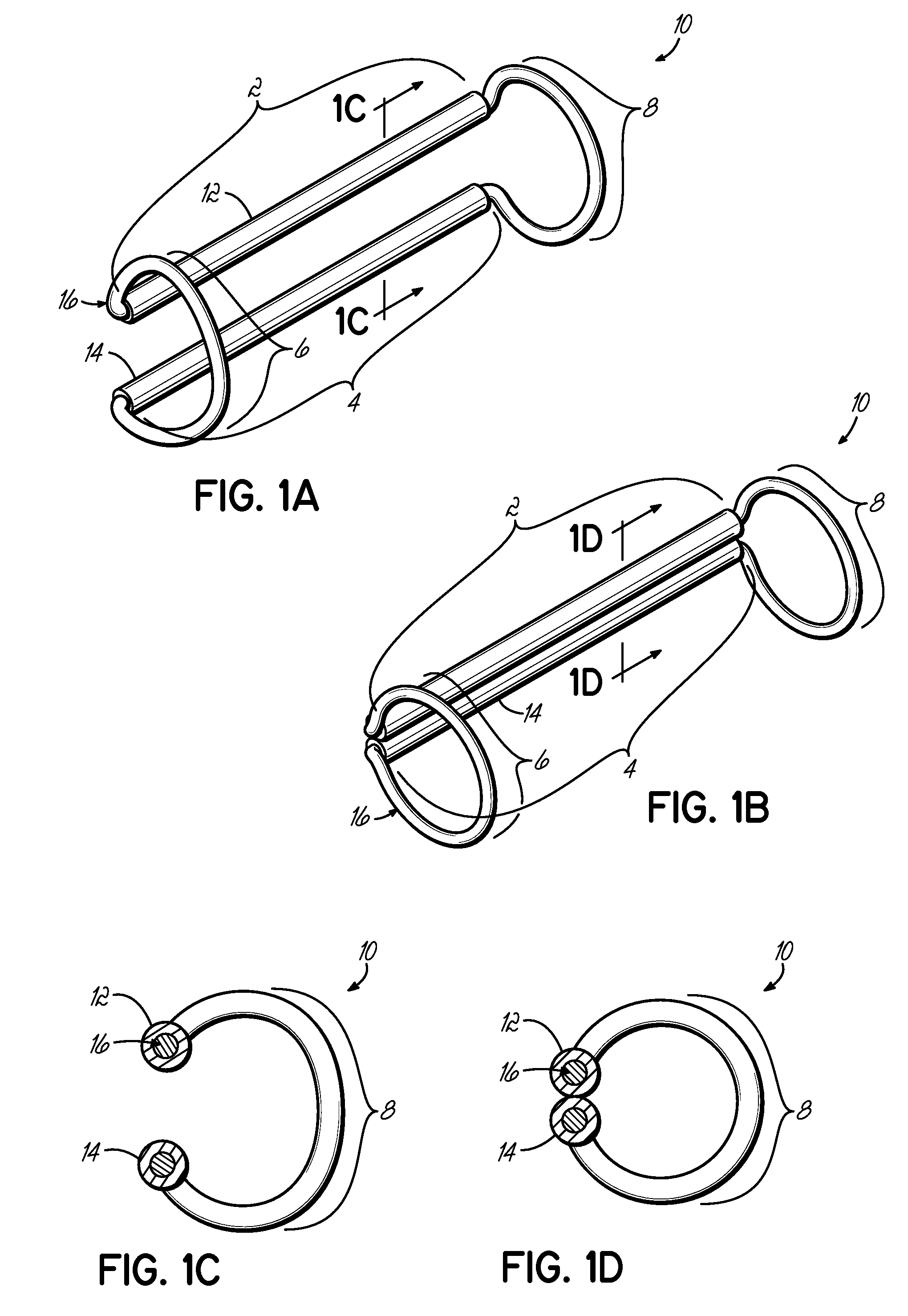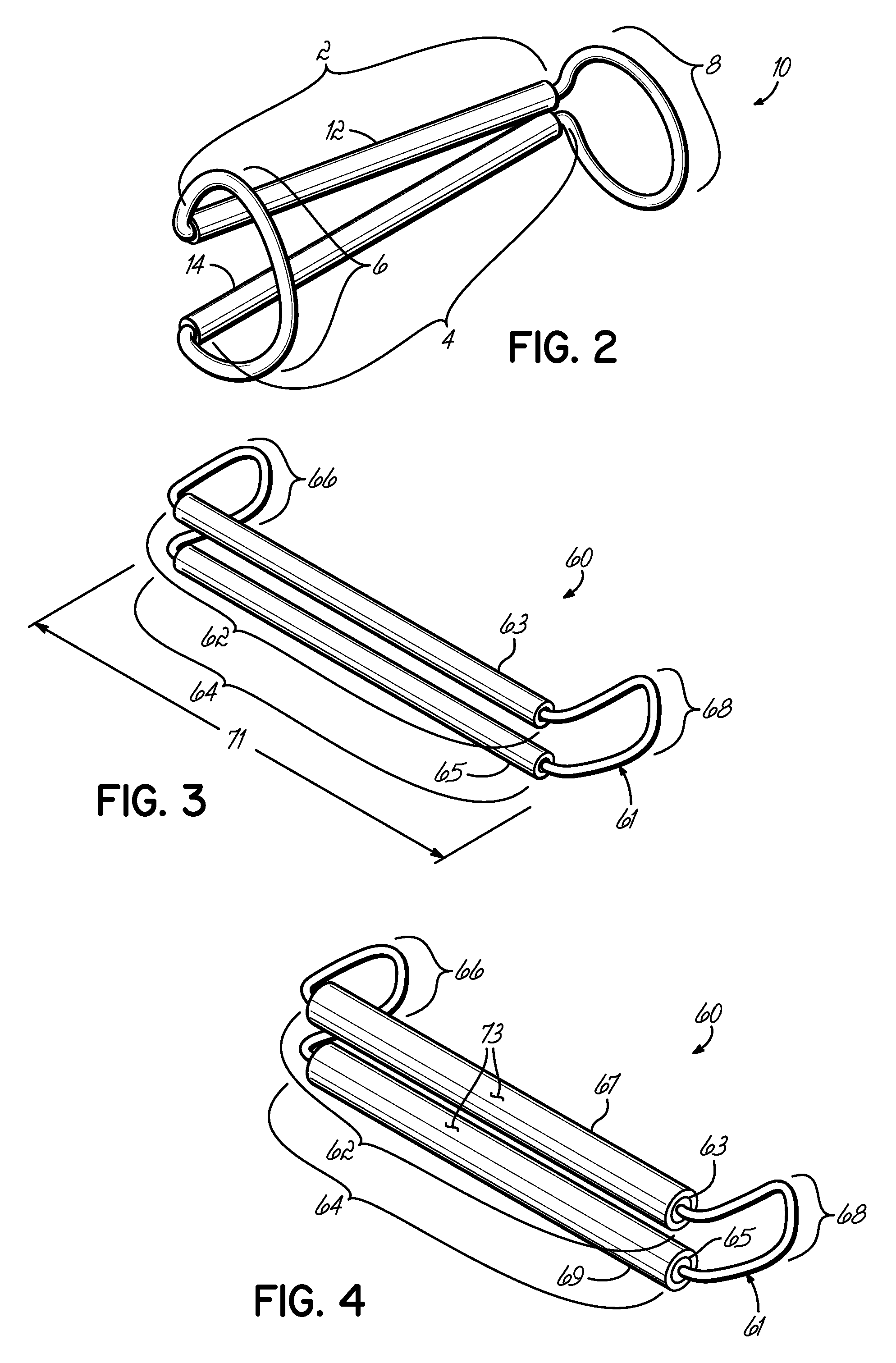Apparatus and Methods for Occluding a Hallow Anatomical Structure
a hollow tissue and anatomical structure technology, applied in the field of surgical methods and apparatus for occluding hollow tissue structures, can solve the problems of atria quivering or beating too fast, normal, congestive heart failure, etc., to prevent outward egress of clamped tissue, increase the diameter of the wire member, and reduce the effect of occlusion
- Summary
- Abstract
- Description
- Claims
- Application Information
AI Technical Summary
Benefits of technology
Problems solved by technology
Method used
Image
Examples
Embodiment Construction
[0053]FIGS. 1A and 1C show one embodiment of a left atrial appendage occlusion clamp 10 in an open position with spaced apart rigid clamping portions 2, 4 and resilient or elastic urging members 6, 8 at opposite ends of each clamping portion 2, 4. Clamping portions 2, 4 may be tubular, and both clamping portions 2, 4 may be at least substantially parallel to each other when arrest, i.e., when they are not being used to clamp tissue. Clamping portions 2, 4 may also be of substantially equal length or of different length, and each may be of larger outer diameter than the wire that may be used to form each of the urging members 6, 8. In this regard, the wire forming urging members 6, 8 can extend through the hollow interiors of the clamping portions 2, 4. In this illustrative example, the urging members 6, 8 are each shaped as a loop. The planes defined by the looped configuration of each of the urging members 6, 8 may be substantially parallel to each other and, in turn, substantially...
PUM
 Login to View More
Login to View More Abstract
Description
Claims
Application Information
 Login to View More
Login to View More - R&D
- Intellectual Property
- Life Sciences
- Materials
- Tech Scout
- Unparalleled Data Quality
- Higher Quality Content
- 60% Fewer Hallucinations
Browse by: Latest US Patents, China's latest patents, Technical Efficacy Thesaurus, Application Domain, Technology Topic, Popular Technical Reports.
© 2025 PatSnap. All rights reserved.Legal|Privacy policy|Modern Slavery Act Transparency Statement|Sitemap|About US| Contact US: help@patsnap.com



